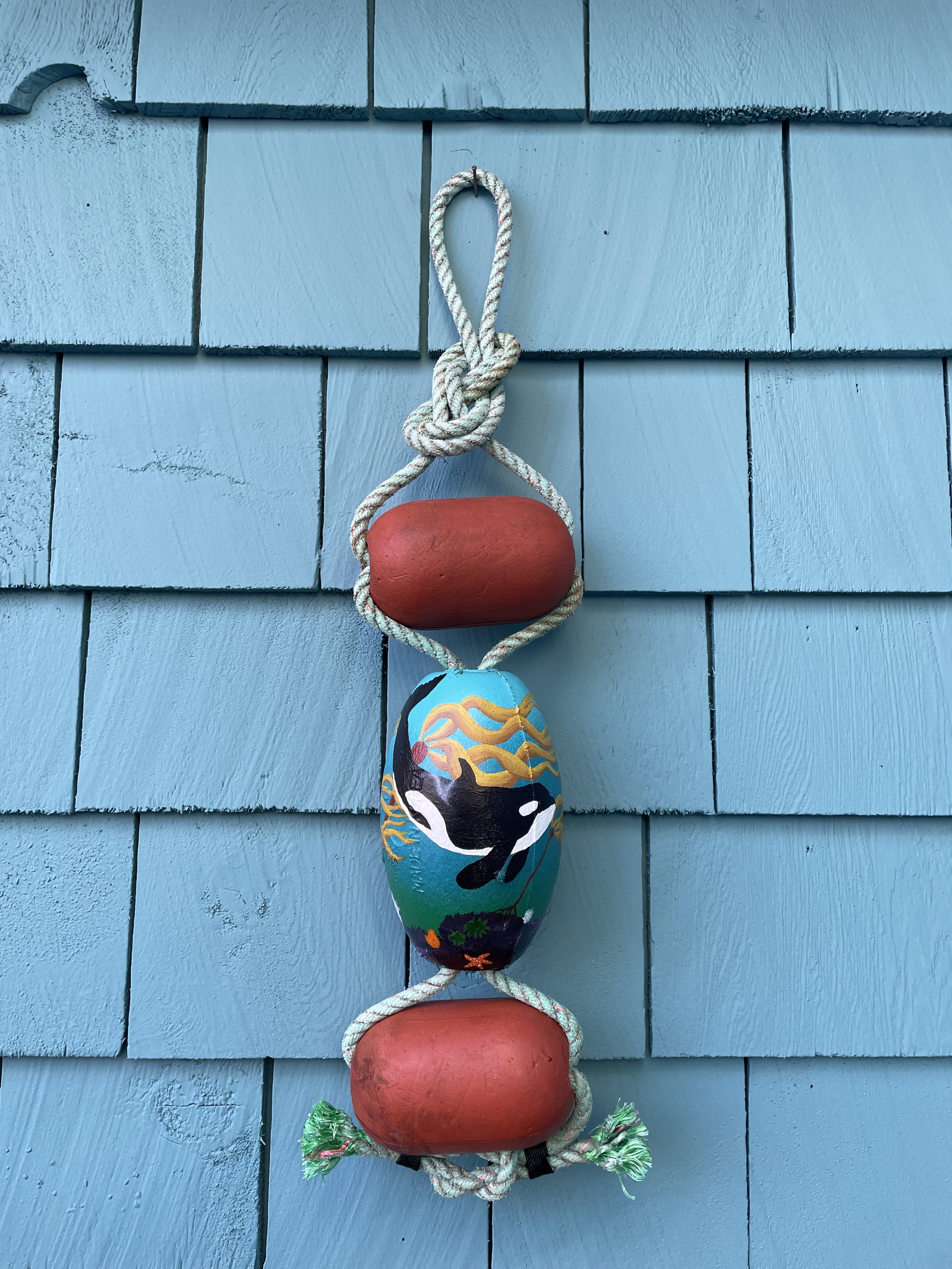
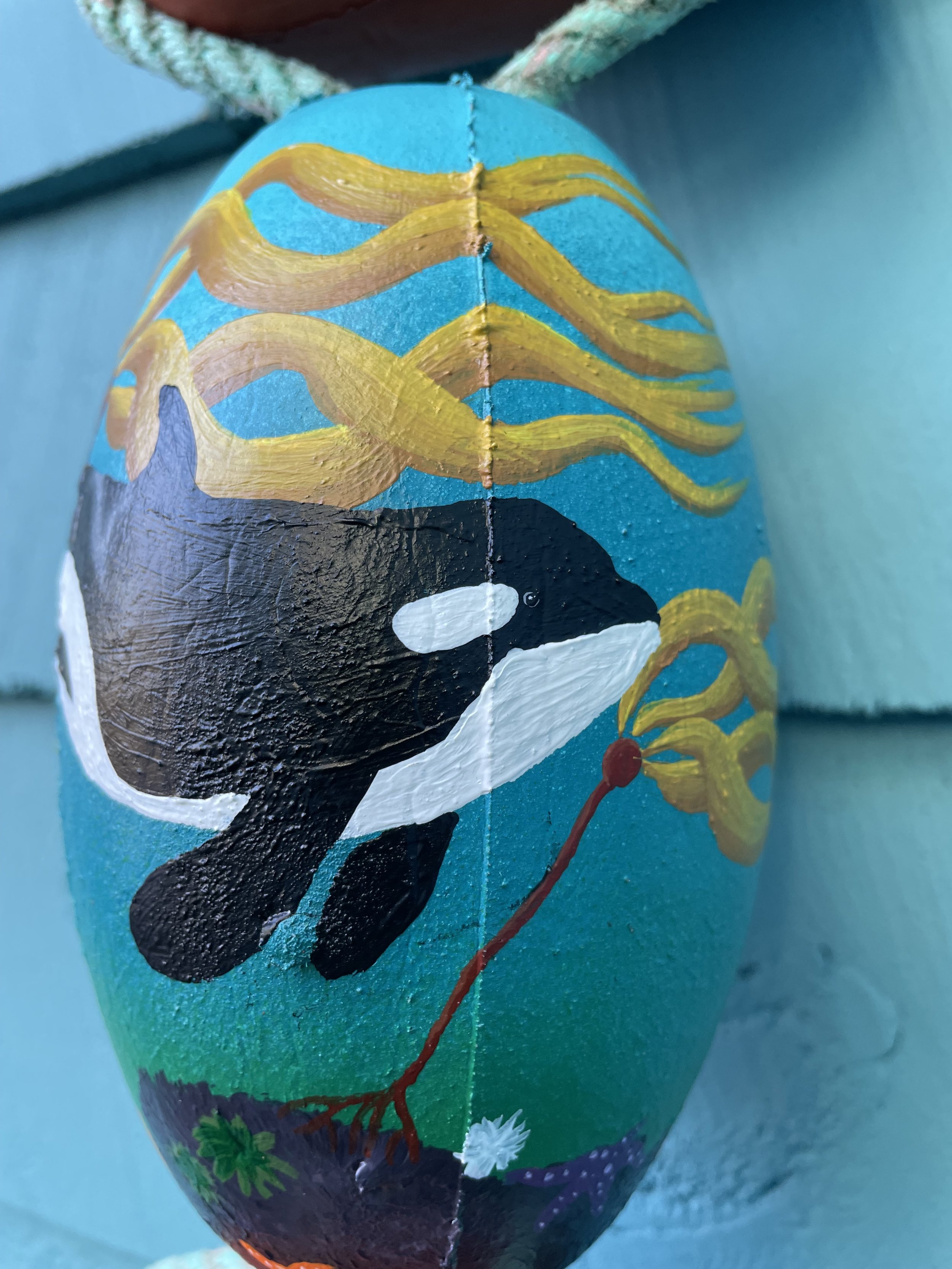
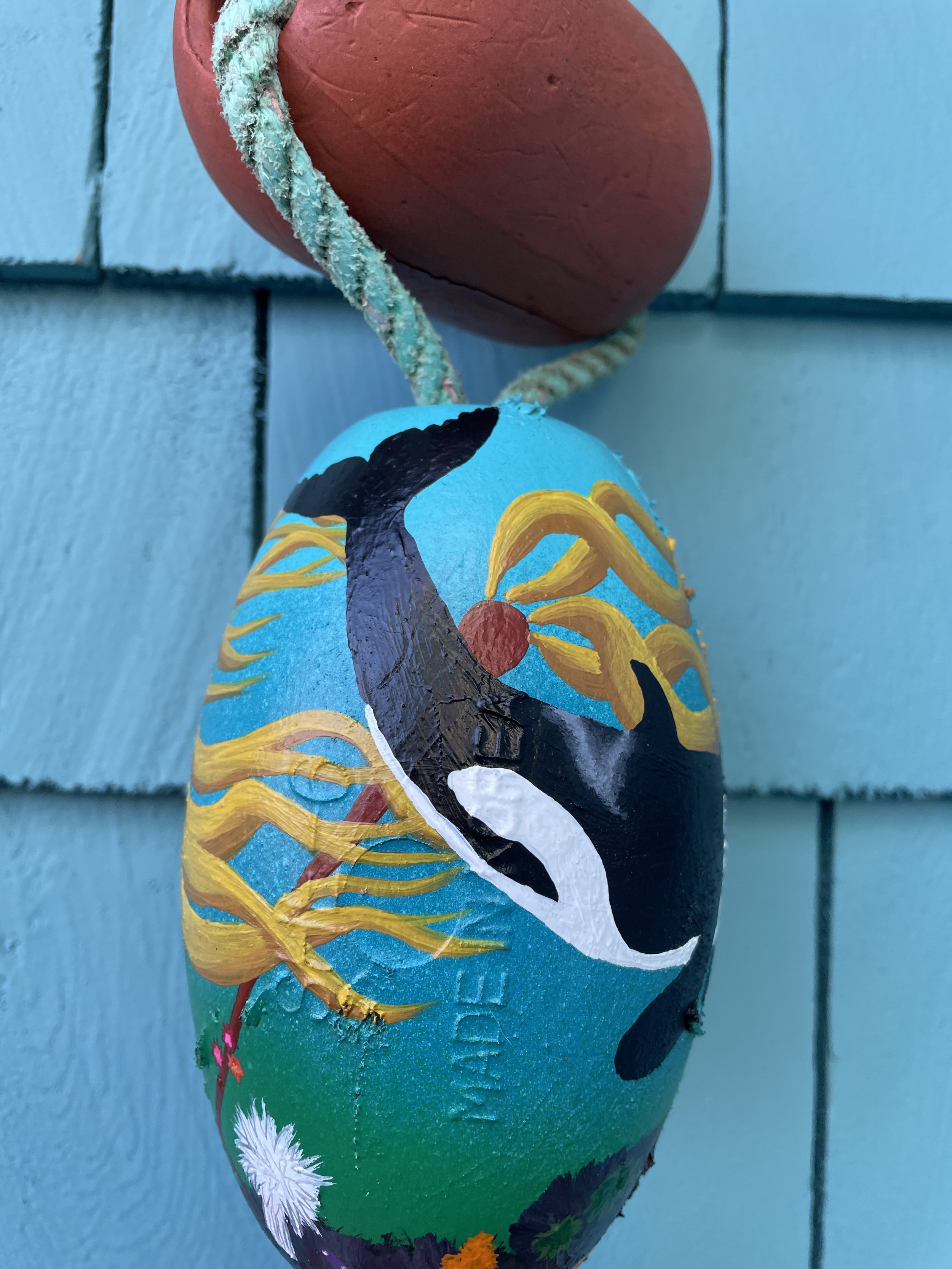
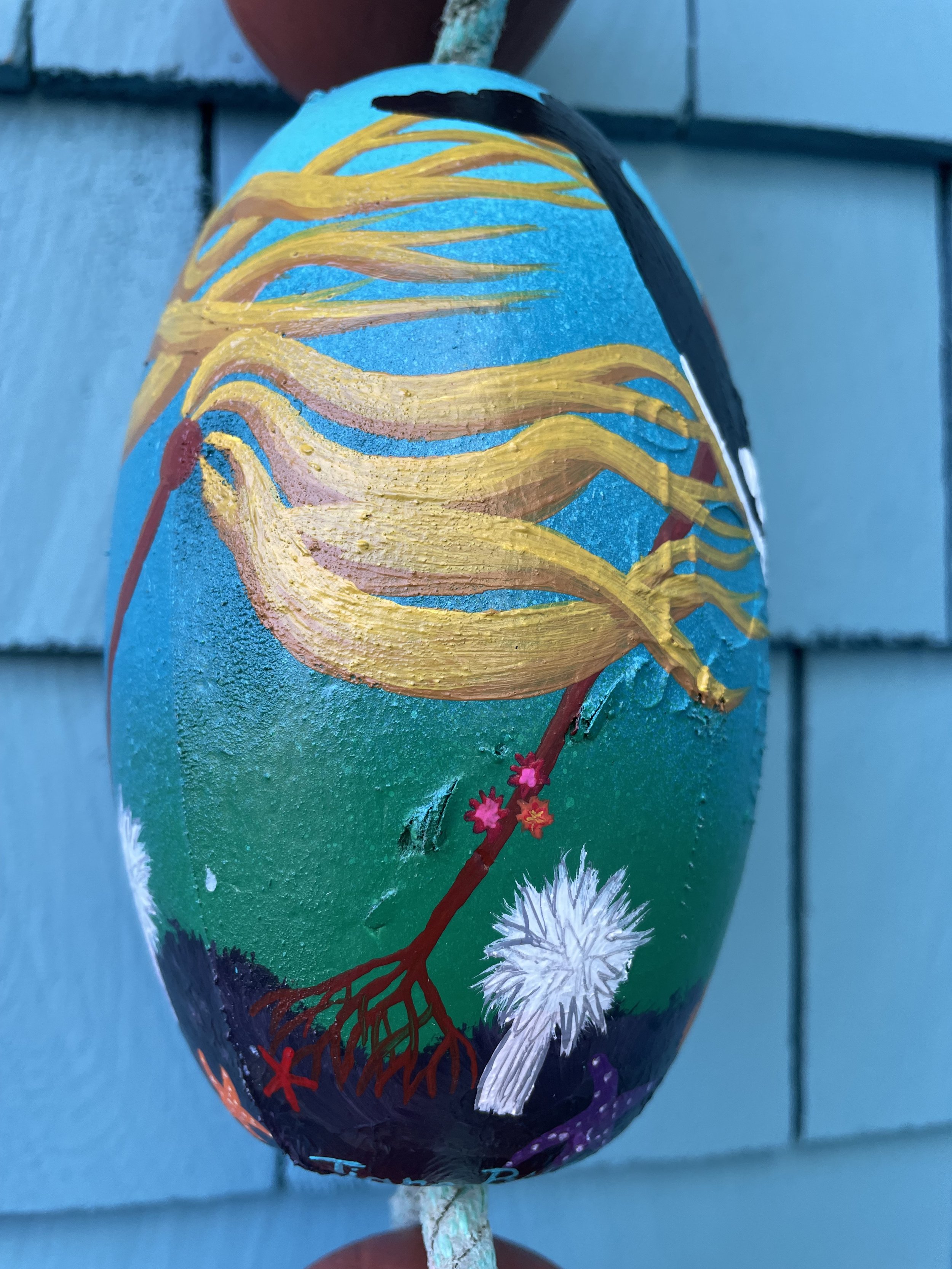
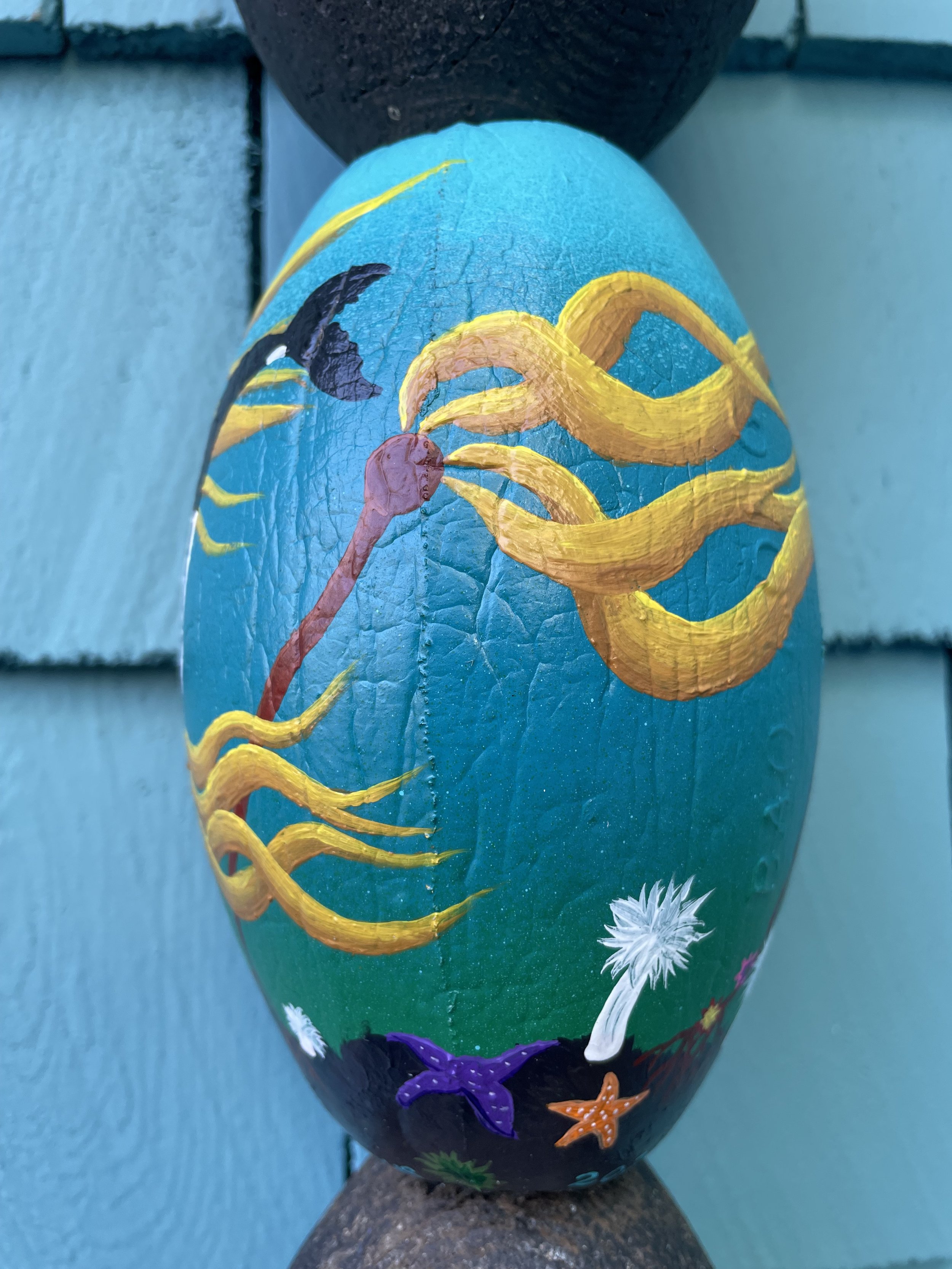
Springer
*Available for purchase at God’s Pocket Resort, Hurst Island
57cm
The centre float of this piece was donated to me by a salmon fisherman from Bristol Bay Alaska and the two orange floats were donated to me by a retired local herring fisherman. All these floats were used in gillnet fisheries to hold the nets close to the surface. I found the line washed up on Balaklava Island, it is tied in a figure eight and an overhand knot and I have lashed the ends with waxed sailing twine.
On the centre piece I have painted Northern Resident orca Springer (A73). In 2002 she was 18-24 months old and found alone and dangerously thin in Washington State. Her markings and vocalizations identified her as the orphaned calf of Sutlej (A45). On June 13th she was captured, medically evaluated, and relocated back to her kin and larger community who were in Johnstone Strait, BC. Nodales (A51) became her surrogate mother upon her return. In October 2021 she was identified by researchers expecting her third calf, in addition to her other babies Spirit (A104) and Storm (A116). Springer’s story is truly incredible, she went from being an orphaned calf to a matriarch.
I have painted Springer in a kelp forest with brooding and proliferating anemones growing on the bull kelp stalks. plumose anemones and green surf anemones grow along the bottom with ochre and vermillion sea stars. There are urchins, a sea peach (type of tunicate) and orange colonial tunicates also living along the bottom of the forest.
Today Springer and her babies are often seen by OrcaLab off northeast Vancouver Island, learn more about her and the amazing work done at Orca Lab visit their website orcalab.org
10% of the proceeds from the sale of this buoy will be donated to Orca Lab. The work of Orca Lab is based on the philosophy that it is possible to study the wild without interfering with lives or habitat and they have been working on this coast since 1970.